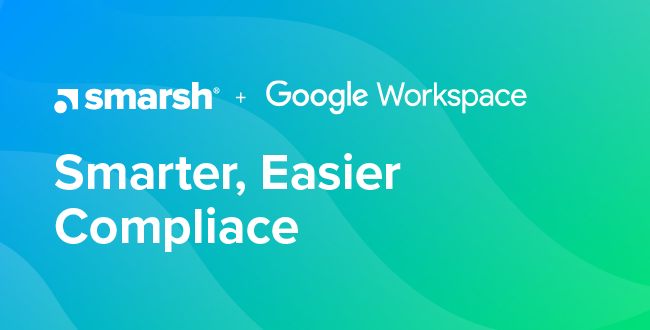Discovering the Gaps Surrounding Collaboration, Mobility and AI
We just attended a very successful PREX2019 event in Chicago, hosted again by the very talented duo of Brad Harris and Chris Bright from Zapproved. For those of you unfamiliar, PREX (short for Preservation Excellence), is the preeminent gathering of e-discovery thought leaders, representing F100 legal teams, law firms, forensic experts, prominent judges, and an assortment of vendors servicing the e-discovery marketspace. Once again, thank you Zapproved for hosting a terrific gathering.
I was fortunate to moderate a technology break-out session on day two that discussed the discovery implications of new forms of electronically stored information (ESI); including collaborative content originating from platforms including Slack and Microsoft Teams, how to address the realities of a mobile workforce, as well as the growing use of applications that are embracing the use of sophisticated artificial intelligence (AI) and machine learning approaches. Craig Ball, Brandon Laetha, and Doug Kominski brought expertise and insights that led to a very eye-opening discussion. Thanks to all three gentlemen for unique perspectives.
In reality, it was VERY fortunate that the session was scheduled on day two, as all three of these topics were introduced on day one, allowing us to consume some very interesting content and get a read from the legal experts in the room of their concerns and issues over these topics prior to our day two session. Here’s the synopsis:
- The realities of mobility make it a first class, mainstream, prime target for e-discovery. It is no longer a challenge to be addressed in the future. It is here and now.
- Discovery influencers are gaining first hand exposure to why collaboration tools are fundamentally different than messaging. Challenges in understanding persistent chats, capturing content that goes through multiple versions via app sharing, and how to review conversations encoded in emojis are now topics being discussed by influential judges, top law firms, and e-discovery practitioners at conferences, in board rooms, and in court. It is here and growing fast.
- AI and machine learning, while still in its early days of practical application, it’s gaining traction in a very well-suited use case: extending the limits of human review of keywords against big data sets with a growing variety of data types. Finally, the industry appears to be moving past the notion that applying predictive analytics against well-manicured subsets of data was the ultimate. Experiments are happening now.
Even so, significant gaps exist. Most importantly:
1) A knowledge gap and limited awareness amongst key discovery influencers of solutions that are available to address these challenges, in particular in the area of mobility.
2) A policy gap, in terms of uncertainty about how organizations should be guided in the revision to communications policies (considering that lawyers themselves are often those that are users of unauthorized networks such as WhatsApp).
3) A technology gap, both in terms of current review tools being unsuited to address today’s communications, and the shortage of solutions that enable firms to capture and control all of the modalities accessible to users today.
Our day two session provided opportunity to discuss how firms can mind these gaps with a few practical steps to regain control over these emerging discovery challenges. Key amongst them were:
- It’s time to get on top of mobile: we talked with quite a few organizations that continue to deal with the collection and preservation of mobile content the way that they’ve always done it – via forensic services and tools like Cellebrite. This, even after recognizing that the extracted data is likely to be incomplete or scrambled. Aside from policy refinement, many organizations would be well-suited to start with a mobility assessment, to explore the how your employees are exchanging sensitive or valuable content on mobile devices, and to explore the technologies available in the market today to enable a more proactive response to discovery.
- Be aware of differences in tools: as we’ve stated before, legal should be actively engaged in the evaluation of new tools brought to the workplace, as tool vendors are all over the map in their understanding of e-discovery and investigative use cases. Microsoft Teams, Slack, Cisco WebEx Teams, Workplace by Facebook, Wrike, Jira, and other tools are unique – and some vendors clearly don’t know what they don’t know, in particular if their capabilities are impacting your preservation and retention practices. Recognizing up front which tools provide a reliable means of capture and preservation is best to understand now – versus in the midst of high stakes litigation.
- Don’t short the people and process aspects: technologies that enable control over new sources are evolving rapidly and best practices are emerging, such as those outlined by Sedona in its updated Social Media primer. These encourage firms to establish central points of control where all communication sources can be preserved and reviewed within a single interface. However, updating policies and procedures, as well as providing on-going user training on acceptable and prohibited use of specific communications tools should be equal parts of a firm’s governance equation.
- Assume AI will live in multiple locations: rather than viewing AI and machine learning technologies as black boxes used for science projects by people in lab coats, legal teams need to recognize that advanced analytics already reside inside of communications tools, CRM systems, document repositories, and other locations housing potential sources of ESI. Predictive coding merely scratched the surface, and the need to understand (and, potentially, defend) the logic behind proprietary algorithms will occupy a greater and greater quantity of brain space of discovery teams into the foreseeable future.
- It’s WhatsApp and what’s next: Advances in communications and collaborative technology are currently in development and in use outside the perimeter of many e-discovery practices and available capture and review technologies, particularly in areas such as ephemeral messaging and AI. And it is inevitable that the demand for immediacy in communications created by shifting demographics will continue to make the list of preferred tools a dynamic one. There will always be the next network, and proactive steps taken by legal teams now to partner with the business side of the house will not only help to reduce discovery challenges in the future, it may also help firms to accelerate innovation and better address the shifting needs and demands of their customers and employees today.
Share this post!
Archiving and Compliance Blog
Our Blog explores the news, trends and best practices in electronic recordkeeping. It’s about managing and getting value from your electronic communications data. It’s about satisfying legal and regulatory obligations. It’s all about turning compliance liability into business insight.




Subscribe to the Smarsh Blog Digest
Subscribe to receive a monthly digest of articles exploring regulatory updates, news, trends and best practices in electronic communications capture and archiving.
Smarsh handles information you submit to Smarsh in accordance with its Privacy Policy. By clicking "submit", you consent to Smarsh processing your information and storing it in accordance with the Privacy Policy and agree to receive communications from Smarsh and its third-party partners regarding products and services that may be of interest to you. You may withdraw your consent at any time by emailing privacy@smarsh.com.
FOLLOW US